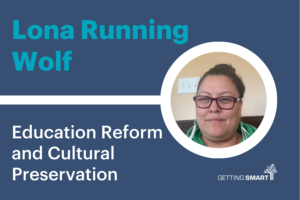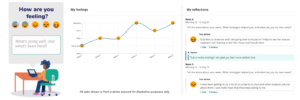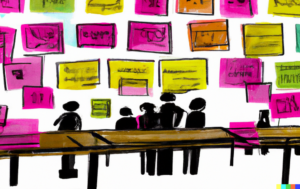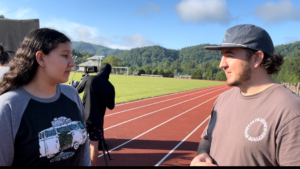Four Things We Can Learn from Australia’s Focus on Student Well-being
[…] recent years, children in the United States have been the beneficiaries of a movement in K-12 education that not only prioritizes student mental health but makes social-emotional learning an integral part of the school experience. In classrooms across America, teachers are helping students learn to manage emotions, achieve goals, demonstrate empathy, maintain healthy relationships […]
Three Strategies to Engage Middle Grade Students in Data Science
[…] bringing community members together around issues of common concern. It is an exciting time for data science education, and many new opportunities are emerging for teaching and learning. As we consider a trio of these—examples focused on engaging underrepresented and marginalized middle-grade students with data science topics across geographies, cultures, and population sizes—three key […]
Surviving the Extremes at the WPS Summit
[…] teachers interacted in a competency-based system. Teachers explained the proficiency scales and students as young as kindergarten explained their data notebooks and showed how they access their learning platforms. During the Metropolitan Arts Academy tour, participants saw firsthand the energy of the administrators and heard the passion from the students. “It’s nice to be at […]
What is Culturally Responsive CTE?
[…] one CTE class at the same rate (82%), and Hispanic students are only slightly less likely to enroll in a CTE course (72%). While CTE and work-based learning programs nationally are quite diverse, there are many pockets of the country—including Ulster—that remain heavily white. When we think of “culturally responsive pedagogy” as it applies […]
Increasing Educator Capacity to Act on Learner Well-Being Data for Improved Academic Outcomes
[…] the radar without obvious external challenges but who are still struggling. Every young person deserves the opportunity to thrive and learn at their best. In the Social-Emotional Learning (SEL) space, there are two categories of tools: 1) curriculum (e.g. Second Step), and 2) assessment (e.g. Panorama). In the past, SEL assessments tended to be one-time […]
Charting a Course for Educational Transformation: The Power of Aligned Portraits
[…] alignment ensures seamless integration of the vision at every level of the educational ecosystem, fostering a cohesive and purposeful transformation. Districts and schools support these with codesigned learning models, curriculum frameworks, and instructional models. At the core of this transformative process lies the Portrait of an Educator, recognizing that educators’ competence and dedication can […]
Designing at the Margins
[…] those from marginalized communities such as students of color, students with disabilities, and students from low-income families. Instead, systems ought to acknowledge individuals’ differences and their “jagged” learning profiles and design schools in ways that accommodate variability not only across students but within them, argues Harvard University professor Todd Rose in his book The […]
Students Are Still Telling the Stories
[…] and Cherokee culture. Cherokee students interview a film crew member on what it’s like to work in video production. Crafting the Story In this class, students are learning about the process of news broadcasting. Freshman, Chaz states, “This class I’m taking, it’s not an ordinary class. It involves a lot of moving parts, like […]
How to Design a School for Belonging
[…] and tools they need. They just do it because they feel comfortable in that space. When the Code Next team at Google asked me to design a learning lab where students would feel a sense of belonging, I knew that meant students had to feel like the space was theirs. I designed the entire […]
End of the Test Doesn’t Mean End of Data
[…] 90 minutes) in DreamBox, they can give teachers and school leaders an accurate prediction of how students would have scored on state tests. Dr. Tim Hudson, Chief Learning Officer at DreamBox, said the predictive insights are already available to administrators for K-5 learners and will soon be available for grade 6-8 students. The assessments are built […]










